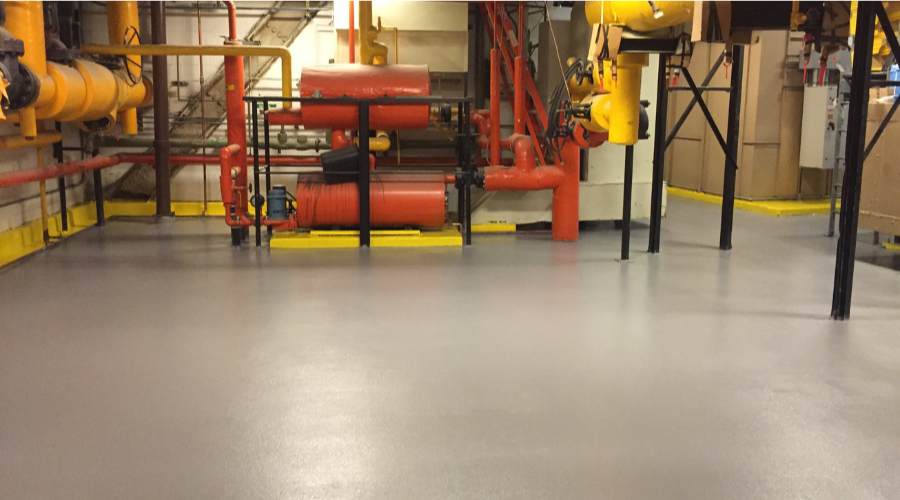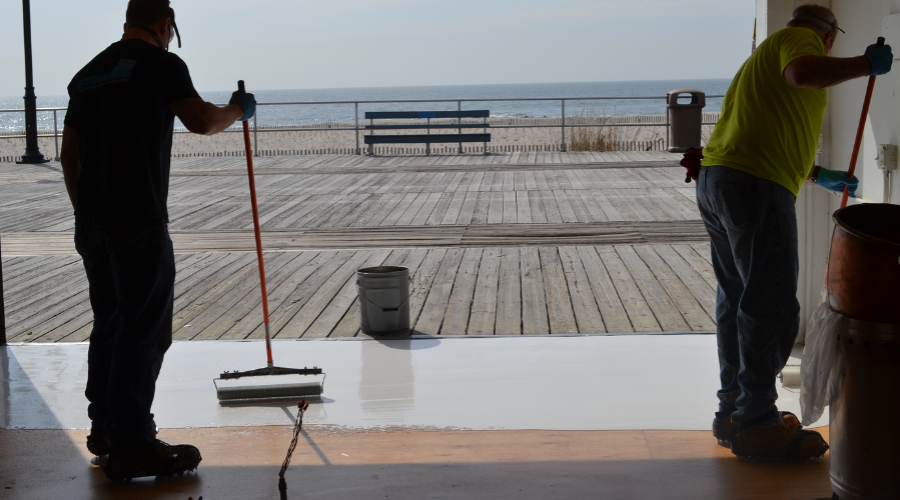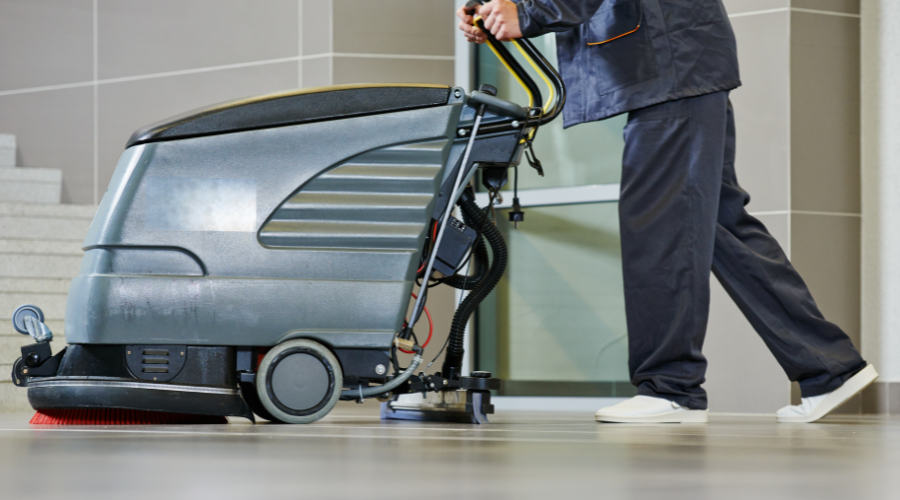Table of Contents:
Table of Contents:
While poured resinous floors can be formulated to have a number of different characteristics, they come in three major chemistries to provide specific benefits.
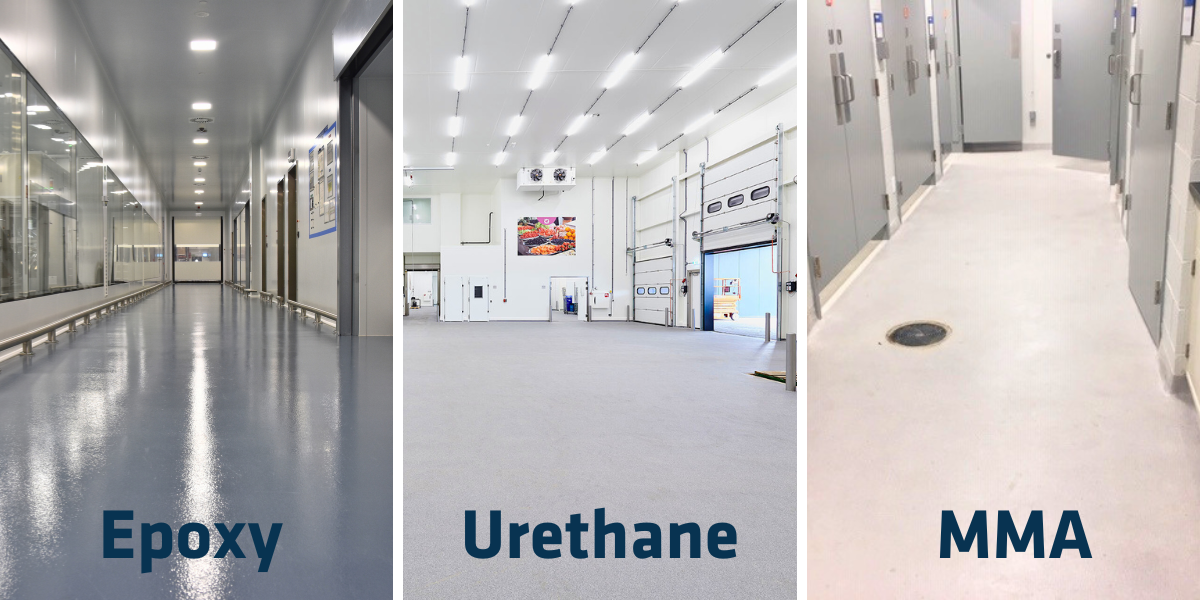
Epoxy, urethane, and MMA floors are each versatile, high-performance solutions tailored to meet the unique needs of any environment.
Types of Poured Flooring
Epoxy Flooring
There are several characteristics to epoxy flooring that make it an attractive choice when choosing a poured floor – these include: durability, conductivity and static control, abrasion resistance, chemical resistance, and low maintenance. Because of this, epoxy floors are most commonly used in industries such as pharmaceutical, automotive, and aerospace where static buildup is a threat and the floors are more likely to come in contact with destructive liquids, alkalis, and solvents.
Urethane Flooring
Urethane floors are best known for their antimicrobial protection, stain resistance, moisture resistance, and thermal shock/cycling. It is no doubt that this kind of floor is highly sought after in areas such as operating rooms, food and beverage processing facilities, and cafeterias, as it provides the utmost hygienic protection and is able to stand up to the fluctuating temperatures of these spaces.
MMA Flooring
Looking for a fast flooring solution for your project? Consider MMA floors. These Methyl Methacrylate floors have the ability to be installed in 1-2 days! Additionally, MMA floors can also stand up to temperatures as low as 0°C, making it the ideal choice for cold storage facilities and areas within a commercial kitchen.
The Poured Flooring Application Process
Poured floors have a unique application process. Proper preparation is critical to ensure an adequate bond and system performance. The substrate must be dry and properly prepared utilizing mechanical methods. Do not attempt to install materials if the temperature of the component and substrate are not within the required temperature range – as the cure time and application properties of the materials are severely affected at temperatures outside of this range. Keep in mind: the precautionary measures regarding temperature and preparation mentioned above apply for all types of floors and methods:
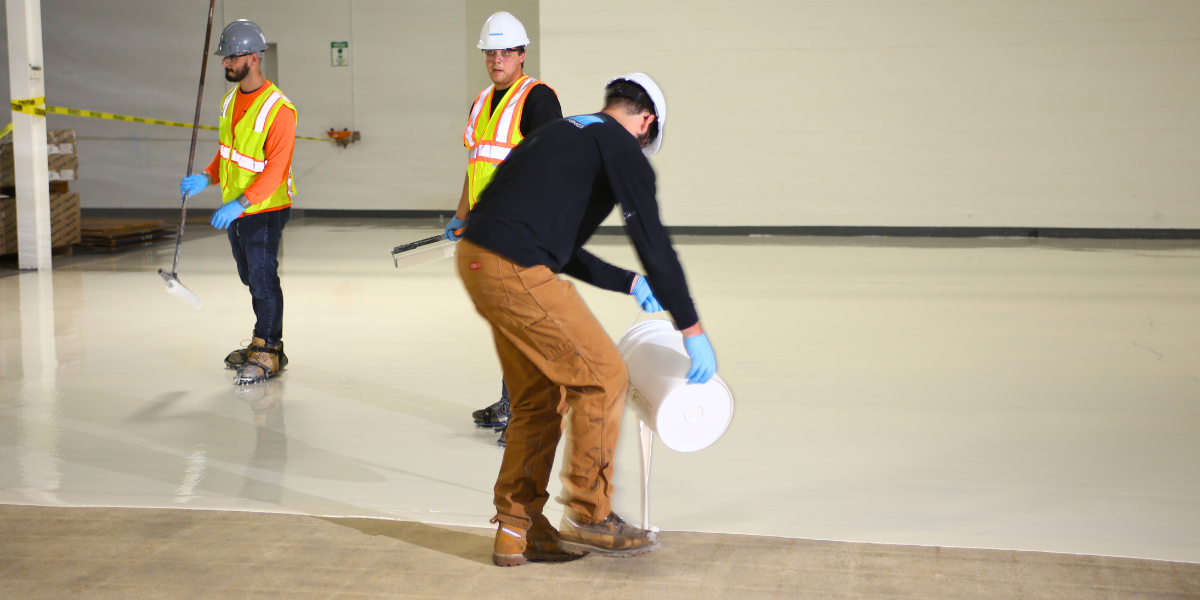
Precision and skill during a poured floor installation creates a smooth, seamless surface for long-lasting performance.
Installation for Broadcast Systems
First, a primer is mixed and then applied to the floor. The appropriate aggregate is chosen to be broadcast into the wet primer using a spraycaster. Once cured, the excess aggregate is swept off and ready for an undercoat. The undercoat is mixed then applied with a squeegee, then rolled with a medium nap roller; after which, the aggregate is broadcast into the freshly-rolled undercoat. Once a cure time of 8 hours has been achieved, the floor is scraped and swept to remove all loose aggregate particles, and finally vacuumed. A sealer is applied to finish the install using the same squeegee and backroll technique.
Areas of use: where heavy foot traffic exists like grocery and retail stores, commercial kitchens, and correctional facilities.
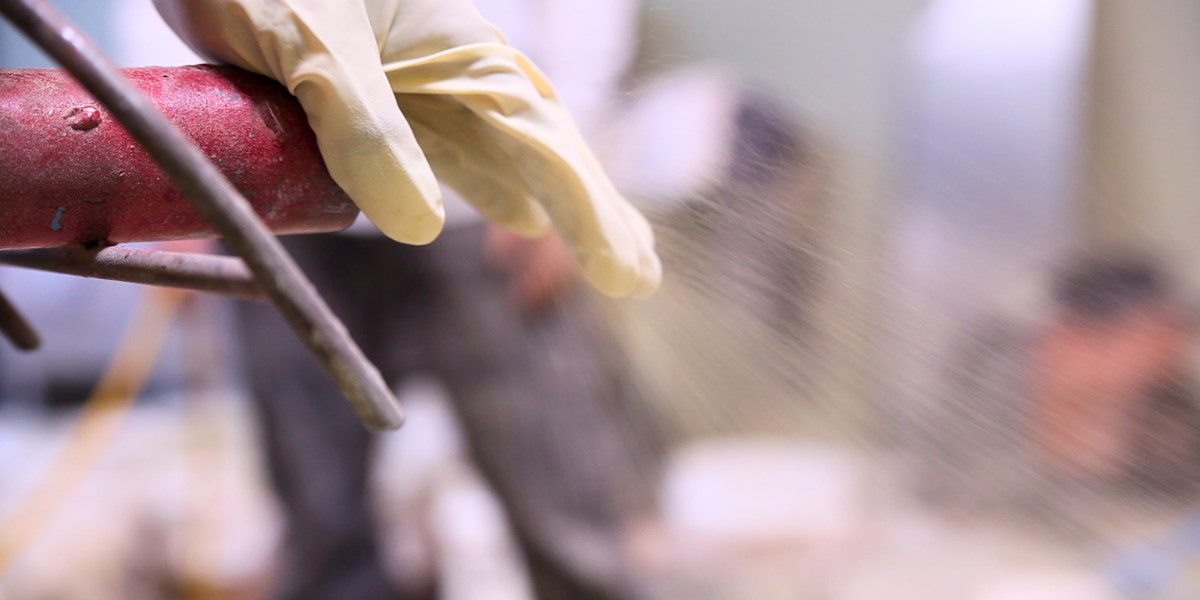
Spray broadcasting creates a decorative, slip-resistant surface by evenly distributing flakes into a freshly applied resin floor system for function and style.
Installation for Mortar Systems
For mortars, mechanical mixing using a JB Blender (or equivalent 5 gal. pail mixer) or a larger mortar mixer is critical for the product to exhibit the proper application properties, cure properties and ultimate physical properties. The material is then applied immediately after mixing. A suitable screed applicator is used to distribute the mixed flooring product onto the floor and steel finishing trowels are used to compact and smooth the surface of the material to the required thickness. Appropriate coatings and sealers are applied over the mortar selected for the environment using a squeegee with backroll or dip-and-roll techniques.
Areas of use: where the substrate is rough and exposed to heavy traffic like forklifts and other industrial equipment. Ideal in general, pharmaceutical, and auto manufacturing spaces and distribution and logistics.
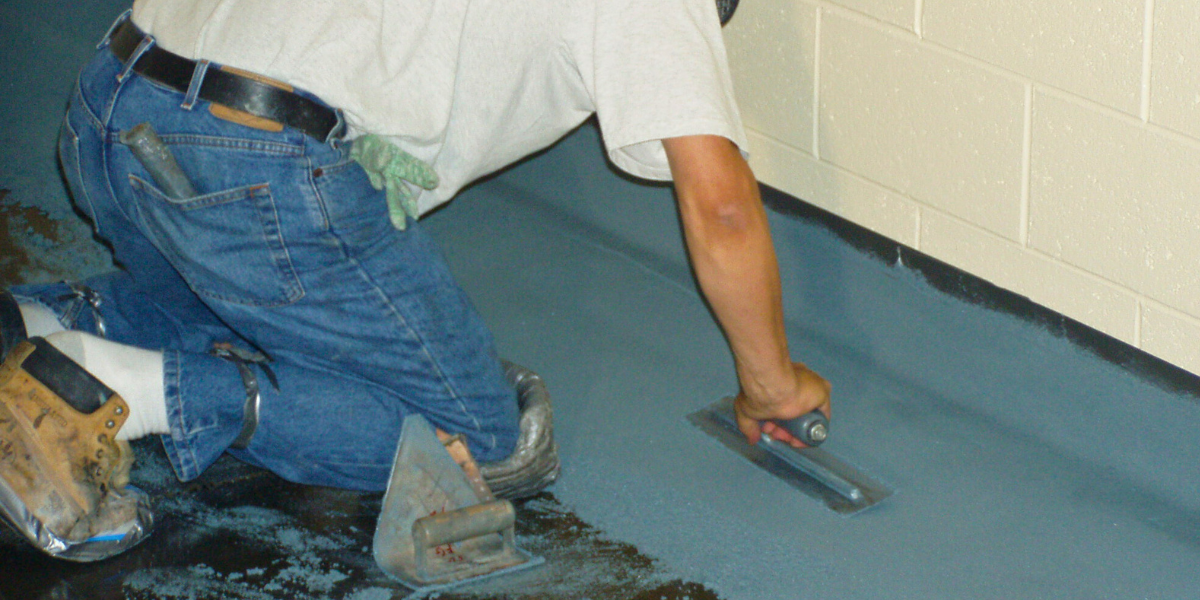
A skilled installer uses a hand trowel to expertly apply and smooth the resin flooring system -- ensuring a seamless, even surface with lasting durability and performance.
Installation for Self-Leveling Systems
First, a standard primer is applied to the substrate. While still wet, two coats of a primer unique to the product of your choosing is applied, leaving 30 mins between each coat. The primer system is applied by squeegee and cured to a tack-free state before applying the self-leveling product. The product is poured onto the floor in a bead and distributed using the appropriate notched trowel or rake pertaining to the desired finished thickness. Finally, the product is rolled with a spiked roller.
Areas of use: cleanrooms, aerospace areas, production spaces.
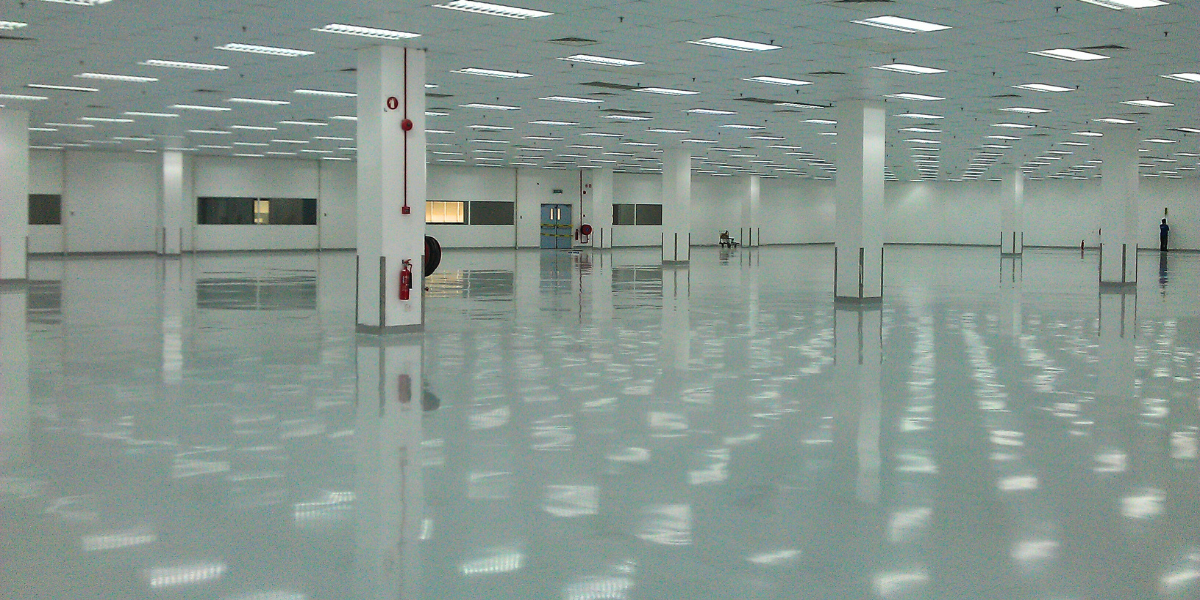
The smooth, even surface of a self-leveling seamless floor is designed to provide both functionality and a clean, uninterrupted finish.
About Stonhard
Stonhard is the unprecedented world leader in manufacturing and installing high-performance polymer floor, wall and lining systems. Stonhard maintains 300 territory managers and 200 application teams worldwide who will work with you on design specification, project management, final walk-through and service after the sale. Stonhard’s single-source warranty covers both products and installation. Contact us to learn more about our precision installation methods and specialized products.
Related Articles
Loving this Content?
Subscribe to upcoming topics!


